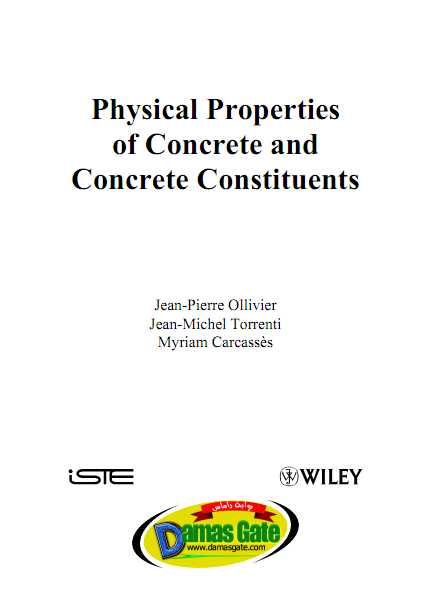Physical Properties of Concrete and Concrete Constituents

Introduction
Concrete is manufactured at the plant or on site from various
components: cement, water and different granular materials such as sand,
gravel and various mineral additions. It may also contain admixtures
intended to modify its properties from its fresh state (for example retarding
or accelerating admixtures, superplasticizer) or its properties in its hardened
state (for example air entraining agents). Properties introduced in this
material are varied. They concern both its fresh state through its ability to be
transported and poured in forms that are more or less fluid, as well as in its
hardened state. Properties include its performances, for example mechanical
resistance, resistance to aggressive environments, and acoustic or heat
insulation. The formulation of concrete consists of finding components and
their proportions to meet specific requirements, which may be very different.
All of this should be done keeping in mind that concrete is a widely used
material, its cost should be limited, and it is prepared and implemented on
site in variable environmental conditions.
Understanding the rheological properties of fresh concrete, the hydration
phenomenon of cement responsible for structuration, the relationship
between the characteristics of the porous solid obtained and its mechanical
performances or resistance to the aggressive penetration requires a complex
knowledge of the physicochemistry of reactive porous materials. The
development of simple formulation rules therefore requires the assimilation
of this knowledge and a good command of the properties of these materials.
Download
http://s18.alxa.net/s18/srvs2/02/002...nstituents.rar